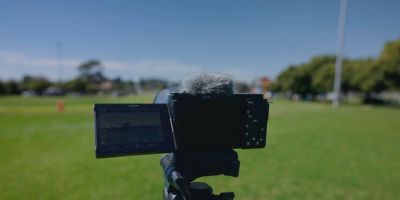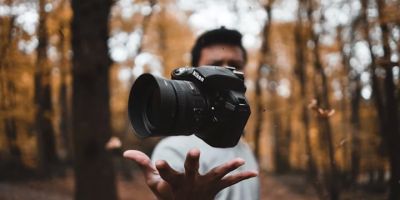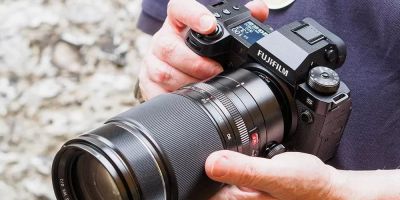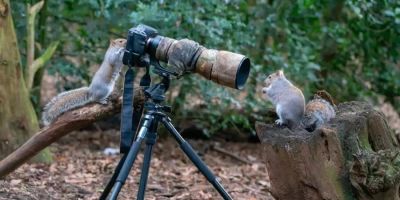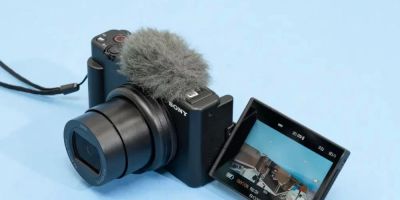- why-camera-matters-for-outdoor-action - choosing-the-right-camera-makes-the-difference
- essential-features-of-sports-cameras - what-to-look-for-in-action-cameras
- dslr-vs-mirrorless-vs-action-cams - comparing-camera-types-for-action-photography
- real-user-story-in-the-wild - from-broken-gear-to-epic-mountain-shots
- camera-maintenance-in-tough-conditions - how-to-protect-your-gear-outdoors
- buying-camera-with-confidence - where-to-shop-and-what-to-consider
1. Choosing the Right Camera Makes the Difference
Capturing high-speed outdoor action is a thrilling challenge—and the camera you choose plays a huge role in whether you get the shot or miss the moment. For outdoor sports and action photography, gear isn't just a tool; it's an extension of the photographer’s vision and timing. Whether you’re shooting downhill mountain bikers in Moab, surfers at Huntington Beach, or skiers in Colorado's backcountry, your camera must handle movement, light variation, and environmental extremes.
According to a 2023 study by Action Photography Magazine, over 72% of failed sports shots are due to insufficient shutter speed, lagging autofocus, or poor lens compatibility—issues directly tied to camera selection. A professional photographer might be able to work around gear limits, but even pros depend on fast, responsive hardware to freeze time in dynamic scenes. That’s why understanding what camera for outdoor sports and action photography fits your specific needs isn’t optional—it’s essential.
2. What to Look for in Action Cameras
The best cameras for outdoor sports and action photography are those that combine speed, durability, and adaptability. Below are key features every action photographer should prioritize:
2.1 Fast Autofocus
Your camera should track moving subjects precisely and instantly. Systems like Sony’s Real-Time Tracking or Canon’s Dual Pixel CMOS AF offer impressive performance in rapidly changing scenes. Look for cameras with phase-detection AF and multiple AF points.
2.2 High Frame Rate (FPS)
For action bursts—like a basketball dunk or motocross jump—you want 10+ frames per second minimum. Cameras like the Sony α9 II and Canon R7 provide even higher burst rates, allowing you to capture the exact peak of action.
2.3 Weather-Sealed Build
Outdoor means unpredictable. Dust, rain, snow, and heat are your camera’s enemies. A magnesium alloy body with full weather sealing is crucial. Think Olympus OM-1 or Nikon Z8 when ruggedness matters.
2.4 Image Stabilization
Especially when shooting handheld or with long lenses, in-body image stabilization (IBIS) reduces motion blur and compensates for shakes. Look for 5-axis stabilization for optimal results.
2.5 Long Battery Life
Nothing kills momentum like running out of juice mid-shoot. Action photographers in remote areas should consider cameras with extended battery options or USB-C charging on-the-go.
2.6 Lens Compatibility
Access to quality telephoto, ultra-wide, and prime lenses gives you the creative control needed for diverse outdoor environments. Mirrorless cameras often require adaptors, so plan accordingly.
If you're unsure where to start, our platform at Photo Studio offers curated recommendations for different photography styles and environments, tailored for both beginners and pros.
3. Comparing Camera Types for Action Photography
Choosing between DSLR, mirrorless, or compact action cameras like GoPro depends on your shooting style and technical requirements.
3.1 DSLR Cameras
Known for their durability and battery life, DSLRs like the Canon 7D Mark II or Nikon D500 remain favorites among outdoor photographers. They offer tactile controls, great lens ecosystems, and proven performance in challenging environments. However, they are bulkier and less future-proof than newer mirrorless models.
3.2 Mirrorless Cameras
Mirrorless bodies like the Sony A1 or Canon R6 II combine speed, compactness, and cutting-edge autofocus. They are lighter and increasingly favored for action due to improved EVFs and faster frame rates. The trade-off? Shorter battery life and potential lens compatibility challenges without adaptors.
3.3 Action Cameras
GoPros, DJI Action, and Insta360s offer unmatched portability and are perfect for POV or mounted shots in extreme sports. While they lack optical zoom and large sensors, they excel at wide-angle video, time-lapse, and rugged reliability.
Some professionals even use a combination: a mirrorless or DSLR as the main shooter and an action cam for secondary angles or dynamic clips.
4. From Broken Gear to Epic Mountain Shots
When Brian Tran, an amateur action photographer from Colorado, took his mirrorless camera on a five-day hiking trip through the San Juans, he didn’t expect a snowstorm on Day 2. His unsealed camera body failed after the second morning, leaving him to rely on a backup GoPro Hero11. Despite the limitations, Brian captured stunning wide-angle shots of bighorn sheep scaling icy cliffs. His story is a reminder that preparation, weather awareness, and reliable backup gear can save your work—and your story.
Brian’s experience underscores why choosing the right camera for outdoor sports and action photography matters so much. It’s not just about megapixels or sensor size; it’s about real-world reliability under pressure.
5. How to Protect Your Gear Outdoors
Even the best camera won’t perform well if not properly cared for in outdoor environments. Here’s how action photographers protect their gear:
5.1 Use Protective Cases
Invest in weatherproof, shock-absorbing camera bags. Brands like Lowepro and Peak Design offer modular designs for quick access and secure storage.
5.2 Keep Silica Gel Packs in Your Bag
These help absorb moisture, especially in humid or wet environments like coastal shoots or jungle treks.
5.3 Use Rain Covers and Lens Hoods
Rain covers protect controls and screens, while lens hoods minimize flare and shield glass from light precipitation.
5.4 Clean Often, Gently
Use a blower to remove dust, microfiber cloths for the lens, and sensor swabs if necessary. Always clean after shooting in dusty or sandy conditions.
Caring for your camera extends its life and preserves image quality—both essential for capturing unforgettable action moments.
6. Where to Shop and What to Consider
When buying a camera for outdoor sports and action photography, consider not just specs but also warranty, customer support, and accessories.
6.1 Authorized Dealers Only
Stick with reputable retailers or manufacturers. Unauthorized dealers may offer lower prices, but warranty issues and fake gear are risks. Our site, Photo Studio, ensures all gear is verified and supported.
6.2 Test Before You Commit
Try out cameras in-store or rent for a weekend shoot. Sites like LensRentals or local shops often provide trial options. Feeling the ergonomics and testing in real environments makes a huge difference.
6.3 Match Camera to Use Case
If you shoot solo hikes, weight matters. For team sports, fast burst speed and autofocus are critical. Align gear to your most frequent scenarios.
Ultimately, investing in the right gear today saves frustration tomorrow. Visit Photo Studio to explore camera bundles, expert advice, and field-tested picks for your specific adventure needs.

